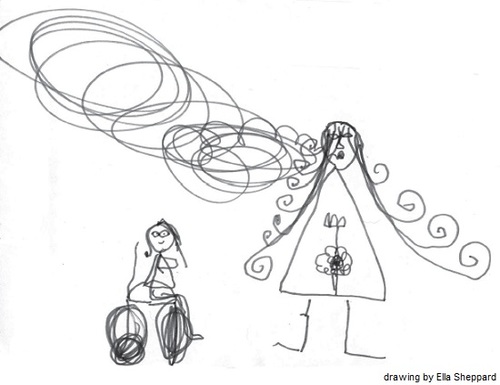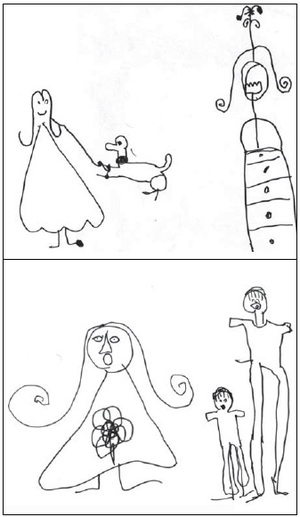
By Marie Sheppard
Anger and I go back a long way. These seeds have been well fertilized, for generations, and I was doing my best to keep up the tradition until I began to practice mindfulness.
Being a parent has motivated me to work harder than I otherwise would have with anger. I didn’t want our children to be on the receiving end, as I had been.

By Marie Sheppard
Anger and I go back a long way. These seeds have been well fertilized, for generations, and I was doing my best to keep up the tradition until I began to practice mindfulness.
Being a parent has motivated me to work harder than I otherwise would have with anger. I didn’t want our children to be on the receiving end, as I had been. I knew that if they were, the cycle would continue and they would end up giving just as they had received. I hoped that they would have a different relationship with anger. I wanted to give them tools to help them to work with anger in ways that would deepen their understanding and compassion for themselves and those around them.
About three years ago we were visiting extended family when a huge fight erupted. Our three-year-old son Rowan and I were sitting at the far end of the picnic table as the voices escalated and the tears came. This was Rowan’s first exposure to such a heated argument, and my immediate impulse was to protect him. I wanted to distract him and, at the same time, give him something that would help him to be with this experience. I started telling him a spontaneous story about looking deeply at our anger. The story introduced a practice we call “blowing our anger” that we are still using, three years later.
A little girl named Jess wakes up from her nap and becomes very cross that no one has come in to give her a cuddle. She stomps through the house and wreaks havoc on her family. She knocks down the block tower that her brother is carefully building. She yanks a ball out of her dog’s mouth, puts it in a drawer and slams it shut. She tells her Daddy (who had just told her that he was making her favorite dinner—sushi) that she hates sushi and that he is a dreadful cook!

She stomps out in the garden to find her Granny. Granny asks her how she is feeling, and Jess tries the same behavior with her. Granny observes that Jess seems upset and encourages Jess to blow her anger up to the sky. Granny explains that anger is sticky, and if you blow it at other people, it will stick to them and they will become angry. If you blow it to the sky, the wind will carry it away. Jess does this, and a scarlet red fireball of anger floats up into the sky and dissipates.
Granny explains that once the anger has blown away, Jess can look underneath it to see what is there. These are the feelings that caused the anger to come. If we share the feelings that fuel the anger, other people can understand what we are experiencing and try to help us. Jess does this and realizes that she felt hurt because no one seemed to care about her or give her any attention when she awoke from her nap. She tried to hurt her family because she was feeling hurt, and she understands that they are probably feeling angry with her. She guesses that under their anger, they are probably feeling hurt or frightened by the things that she did.
Granny encourages Jess to go back into the house and explain what happened to her family. Jess brings her family to the garden and describes how she blew her anger and what she found underneath. Then, she invites them to practice in the same way. Jess holds their hands and as they blow, the colors fly up to the sky and float away.
We have used this story (with lots of rousing sound effects) to help us manage our anger and look at what is underneath it. By “managing,” I mean not blowing anger in hurtful ways at those around us. Blowing is really breathing and calming. Once we have released the force of anger, we can identify its cause.
After I first told the story, I began going outside to blow when I became angry. I would then return to the family and explore what was underneath my anger. Once he had seen me practice this way, I invited Rowan to go outside and blow when he became angry. It’s been important that it not be seen as a punishment, but as a way of helping.
The first time he did this, he was in the car. He rolled down his window and blew very hard (and noisily!). He described what his anger looked like, in vivid detail, as it flew up into the sky. As we continued this practice, he wondered whether it would stick to trees or birds, and we agreed that it dissipated in the air so that it couldn’t stick to anything. After he had finished his “blowing meditation,” I would coax him to share the feelings that had caused the anger. Discussing these emotions, and the events leading to them, was a healing process, for both of us.
As he grows older, Rowan is more focused on looking into his anger. There have been several times where he will initiate, after having blown his anger at us (and then outside), a discussion about what is underneath his anger. While we still encourage him to practice blowing (and vice versa), he needs less help with the next steps then he did before. Just recently, a friend of his had an altercation with another playmate on the playground. Afterwards, his friend stood perfectly still and bellowed at the top of her lungs. She was furious. Rowan was perched on the slide and called down to her: “What’s underneath your anger, Leah? I think you might be embarrassed because of what happened, is that what’s under your anger?”
I stood to the side, listening as he gently tried to help her figure out why she was so upset.
I was deeply moved that he found this tool useful, and of his own volition, was using it to help a friend. It reminded me of one of the Buddha’s teachings that I treasure most: don’t practice because I tell you to. Only practice if it works for you.

Marie Sheppard, Joyful Path of the Heart, practices with the Still Water Mindfulness Practice Center and the Washington Mindfulness Community. Marie and her family (partner Scott, children, Rowan and Ela, and dog, Bicho) enjoy the outdoors.

